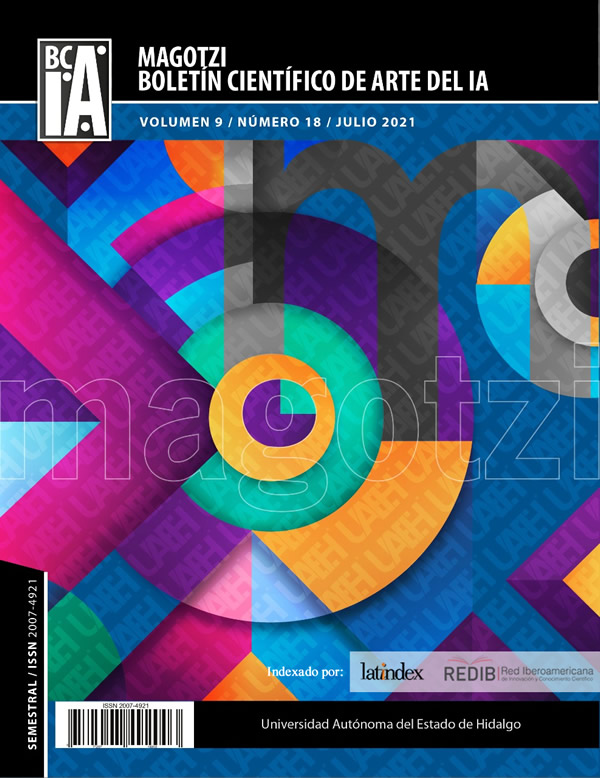The captives of two mexican painters: Rosa Rolanda and María Izquierdo
Abstract
The objective of this essay is to relate the category of captivity of women with art and to demonstrate how, through artistic expressions, two women painters Mexicans capture the way of feeling in the world as artists and as sensitive human beings, but also the feeling of the women that society has taught them to be, captive in ways of being. For this, first, the approach of the anthropologist Marcela Lagarde will be presented regarding the captivity of women, which in her opinion are: Mother-Wife, Crazy, Imprisoned Woman, Hooker and Nun. Afterwards, the portraits of each of the chosen painters, Rosa Rolanda and María Izquierdo, will be presented. It will continue with the description of two works that have been considered significant in his career, the first the self-portrait painted in 1952 and the second "Dreams and hunches", created in 1947. After offering details of the chosen paintings, it will be done a relationship between them with the captivities of women, since we consider that, when applying this category to a work of art, it can be seen that each of the painters, in addition to expressing representations of human thought in general, build a mirror that reveals them as women.
Downloads
References
Arcg, Tere. (2012). Las aventuras surrealistas de las mujeres artistas en México y Estados Unidos”, México: Museo de Arte Moderno. https://www.youtube.com/watch?v=W57ZHXKMKZc
Castellanos, Vicente. (2011). “Una mirada analítica sobre la opresión en el filme Quemar las naves”, Tendencias en el cine mexicano contemporáneo, España: Editorial Académica Española.
Comisarenco Mirkin, Dina. “El autorretrato femenino en México”, Museo de Mujeres Artistas Mexicanas, https://museodemujeres.com/es/biblioteca/463-el-autorretrato-femenino-en-mexico
Gamboa, Fernando, José Pierre, Olivie Debroise, Silvia Navarrete, Lourdes Andrade. María Izquierdo (1988). México: Centro Cultural Arte Contemporáneo.
Gorostiza, José. (1937). “La pintura de María Izquierdo”. Catálogo Acuarelas de María Izquierdo, febrero, Frances Toor.
Hernández Jiménez, Gloria. “Arte y Comunicación”, Fragmentario de la Comunicación, México: Elementum, pp.201-2013.
Hernández Jiménez, Gloria. (2019). “Tragedia y música: los avatares de la creación y la figura femenina en la obra de María Izquierdo”, Crónicas, número 500, pp.489-520.
Lagarde, Marcela (1993). Los cautiverios de las mujeres. México: UNAM.
Luna Martínez, Angélica. (2008). “Amparo Dávila o la feminidad contrariada”, Espéculo, Madrid: Universidad Complutense. http://www.ucm.es/info/especulo/numero39/adavila.html
Manrique, Jorge Alberto y Teresa del Conde. (2005). Una mujer en el arte mexicano. México: UNAM.
Museo Casa Estudio Diego Rivera y Frida Kahlo. (2019). Yo soy Rosa Rolanda. Cuaderno de actividades, México, 2011. https://issuu.com/mcedrfk/docs/yo-soy-rosa-rolanda, pp.3-4.
Marchán, F. (1994). Del arte objetual al arte del concepto. Madrid: Akal.
Monsivais, Carlos. (2007). Rosa Covarrubias, una americana que amó México. México: Lunwerg .
Panofsky, Erwin (1987). El significado en las artes visuales, Madrid: Alianza Editorial.
Williams, Adriana. (2011). Rosa Rolanda: Una orquídea tatuada y la danza en las manos, México: Conaculta.











